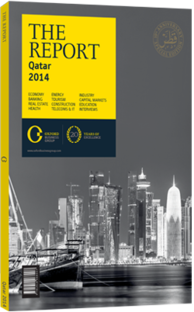OBG talks to Badr Mohammed Al Meer, Acting CEO, United Development Company

Interview: Badr Mohammed Al Meer
Considering the increase in population growth over the past year, how concerned are developers about rental inflation in the coming years?
BADR MOHAMMED AL MEER: It is true that the population has been growing over the last few years, but rental inflation is certainly not rising at an alarming level. On the contrary, falling real estate prices are likely to slow down the rate of increase in rent prices. According to Qatar Central Bank’s real estate index, from May to September 2013 prices dropped by 6.2%. This is likely to ease upward pressure on rental inflation, enhancing the competitiveness of the Qatari economy and relieving concerns that the real estate sector is again experiencing an asset-price bubble like in 2007.
The drop in land prices since July 2013, therefore, is a key indicator that the increase in rents is likely to slow in the next few months. As such, we do not foresee inflation having any impact on the attractiveness of high-end projects, such as The Pearl.
Low rent inflation in Qatar has major implications for macroeconomic stability, financial soundness and competitiveness for high-end projects. On the other hand, in comparison to the rental market there will be inflation in the cost of construction, similar to 2006-07 in preparation for the Asian Games. Many contractors faced a shortage of materials, which played a significant role in the large increase in construction costs.
Does real estate demand justify expansion of middle and low-end residential supply, and is there room for expansion in the high-end segment?
AL MEER: With 120,000 new jobs set to be created annually over the next two years, demand for middle- and low-end residential units will see a drastic rise. Qatar is unlikely to witness a major shortage of residential space in the short term. Rather, a situation similar to what happened during 2006-07 may arise again, when work on new projects attracted a large number of foreign workers. This will justify further expansion of the middle- and low-end residential supply.
As far as expansion of the luxury-end segment is concerned, we expect the demand from retail and institutional investors for residential properties to increase as residential properties have been giving stable cash flow to investors. The return of investment from residential properties in Qatar ranges from 6% to 8%. Traditionally, the high-end segment was dependent on foreign investment, however, there has been strong demand from the Qatari population in recent years, and we expect this to continue in the future. It therefore gives us all the more reason to believe that there is room for further expansion in the high-end segment.
How has increasing demand and undersupply impacted the market for rentals versus ownership?
AL MEER: The property market is leaning more towards buyers than renters, where the market share is equally separated between both local and foreign investors.
However, the latter are more incentivised to purchase property, by receiving advantages such as residency permits. Apartments are more desirable for foreign buyers as there are no incentives to purchase land, which is costly. Pent-up demand for property ownership is on the rise and sales figures in recent months are a testimony to this fact. Statistics show that property ownership has doubled over the past year and this is set to continue going forward. With good returns on property investment, we expect to see a surge in ownership.
To what extent has the local financing environment for mortgages influenced property ownership?
AL MEER: Most foreign investors are buying property in the high-end residential segment, where sales have improved over the last two years. The upward trend can be attributed to better local bank financing rates, as well as greater certainty on occupational costs and improving rental returns. As a matter of fact, most Qatari banks support the mortgage market by offering several schemes for home and land financing at very low rates for nationals as well as expatriates.
You have reached the limit of premium articles you can view for free.
Choose from the options below to purchase print or digital editions of our Reports. You can also purchase a website subscription giving you unlimited access to all of our Reports online for 12 months.
If you have already purchased this Report or have a website subscription, please login to continue.

